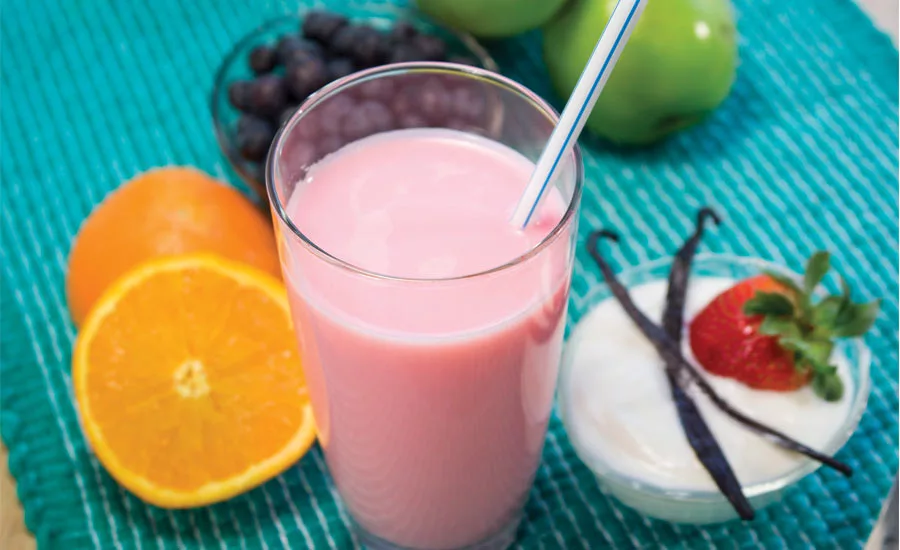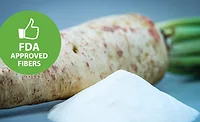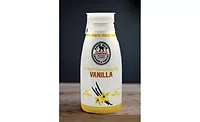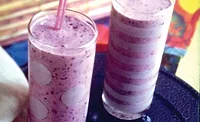Clean-label, non-GMO trends impact usage of hydrocolloids
Beverage-makers turn to hydrocolloids for sugar reduction

Known for its lineup of glues, tapes and sealants, the Gorilla Glue Co. has been helping consumers for more than two decades to tightly bind products and provide stability. In the beverage market, stabilizing ingredients might not have the same memorable commercials featuring large apes who save the day. However, hydrocolloids have shown how valuable they are in order to improve a beverage’s texture and mouthfeel, facilitate increased usage of protein, fiber and nutrients, and serve as “the glue” to provide consumers with the functional, healthy beverages they demand.
As consumers around the world embrace health and wellness, functional beverages that tout vegan, organic, non-GMO, fortified and free-from claims are impacting preferences and creating limitless opportunities for beverage manufacturers, says Leanne Levy, senior manager of Americas Marketing for Atlanta-based CP Kelco.
“Formulators have a plethora of options when it comes to protein sources, added nutrients and stabilizers used to ensure desired textures to accommodate the use and functionality of these added wellness components,” she says. “Using hydrocolloids like xanthan gum, gellan gum, pectin and carrageenan can create opportunities for enhanced stabilization, texture and mouthfeel, as components like calcium, fiber, protein and other minerals and vitamins are added to improve the nutritional profile of a beverage.
“We are also seeing a trend in the removal of components like sugar, gluten, lactose, fat, artificial colors, preservatives and flavors,” Levy continues. “Sugar reduction is a priority for many beverage manufacturers. However, sugar does more than just add calories and flavor. It imparts sensory properties such as body, mouthfeel and weight, allowing for a more pleasant-tasting drink. Pectin can be used to provide the perception of added mouthfeel as well as help mask any aftertastes sometimes experienced with high-intensity sweeteners.”
Using hydrocolloids like pectin in protein beverages containing whey, dairy or plant-based products can provide suspension and protein stabilization to prevent protein aggregation and prevent gritty mouthfeel, Levy adds. “Gellan gum is a great suspension aid that will homogeneously suspend insoluble proteins, from almonds to hemp seeds, to support nutrition claims while enhancing visual appeal and functionality,” she says.
Jaime Underwood, senior technical service representative for Minneapolis-based Cargill, also espouses the value of hydrocolloids. “Two of the biggest health-and-wellness trends we see in beverages — protein and sugar reduction — wouldn’t be possible without hydrocolloids,” she says. “The higher the protein content [in beverages], the harder it is to keep proteins in suspension and maintain mouthfeel. … In reduced-sugar beverages, maintaining mouthfeel is a key consideration. When you reduce sugar, you make products that are much thinner and less satisfying. Hydrocolloids can fill that role in reduced-sugar beverages.”
Pectin also is a go-to ingredient for low pH, high-protein beverages and is highly functional in acidic juice beverages, Underwood adds.
“Plant-based beverages are driving the use of suspending hydrocolloids such as xanthan, gellan gum, cellulose gum and cellulose gel,” says Rosa Sanchez, group manager of beverages at St. Louis-based DuPont Nutrition & Health. Locust bean gum provides great mouthfeel without adding to viscosity, she adds.
Opportunities abound
Beverages that contain insoluble ingredients (cocoa), instant beverages (protein shakes), dairy beverages (chocolate milk), drinkable yogurts and milk-juice blends are examples of products that can reap the benefits from hydrocolloids. Reduced-sugar fruit juices also fall within this categorization because if hydrocolloids aren’t used, the pulp and protein precipitate out, leaving the water on top.
“It simply doesn’t have the body to keep all the separate components in suspension,” Underwood explains. “However, add some hydrocolloids [like pectin], and everything stays in homogenous suspension. The result is a reduced-sugar beverage that looks and has the mouthfeel consumers expect.
Cargill has the technical ability to extract pectin from citrus fruits and manipulate its structure to better target stability and gelling, she adds. “Prior to these advances, it wasn’t possible to create a stable, low-pH beverage that wouldn’t curdle. However, thanks to our enhanced pectin products, yogurt drinks are now one of the hottest dairy beverage segments,” Underwood says.
When looking to emulsify beverages, or combine two liquids that don’t typically mix well, acacia comes highly recommended from Davis Luna, beverage technologist at TIC Gums, White Marsh, Md.
“Acacia helps enhance mouthfeel. Because it is derived from natural sources in the Sahelian region of Africa, acacia is an ingredient that can help meet certain label declarations such as non-GMO, organic and chemically unmodified,” Luna explains. “For instant beverages like protein shakes, xanthan gum, carrageenan and CMC are some of the most popular gums used. These hydrocolloids are cold water soluble and help to aid in both suspension and creating a decadent, shake-like texture.
“For those seeking alternative ingredients to meet common label-friendly parameters, TIC Gums has developed the Ticaloid Ultrasmooth CL blend that provides stability and texture in instant beverage,” she continues. “When developing beverages, oftentimes formulations require more than one hydrocolloid to achieve the desired outcome. This is when the ‘gum gurus’ suggest a gum blend like our Ticaloid PRO 181 AG system for those seeking to target texture and stability in [ultra-high temperate and high temperate/short time] (UHT/HTST) dairy alternative beverages.”
Combatting challenges
As high-protein and dairy-based beverages increase in popularity, experts say that finding the right solutions for these applications can be challenging, particularly because of the stability and functionality of hydrocolloids in various pH ranges and interactions among the ingredients in a formulation.
“Beverage formulators should consider pH of their finished product and, most importantly, the main benefit that they want to achieve when selecting a hydrocolloid,” DuPont’s Sanchez says
Beverage formulators also should consider proper hydration, viscosity and activation of the hydrocolloid while paying attention to the different hydration ratios and temperatures that can impact the product. “Some hydrocolloids, such as MCC, are activated by shear; therefore, homogenization must be part of the processing conditions,” she adds.
Christine Addington, Cargill’s senior dairy technical service specialist, notes that neutral pH dairy beverages also can cause formulators headaches because milk proteins, in particular, can be very unstable and more susceptible to heat during processing. Beverages created with UHT processing can pose even more challenges because of the risk of denaturing the proteins and causing a sandy or gritty texture.
“In these situations, hydrocolloids are the key to success,” Addington says. “They can coat and protect the protein, all the while contributing to the thick, creamy texture consumers expect from their dairy beverages. They also help provide good homogenization and prevent phase separation and precipitation of proteins.”
Sourcing of hydrocolloids also can present challenges. For example, a few years ago, the pectin industry faced a supply shortage due to the limited availability of the pectin raw material, citrus peel, following poor harvests of lemons and limes in Latin America, CP Kelco’s Levy says.
In response, CP Kelco developed a patented technology and invested in capabilities to process citrus orange peel for pectin production, enabling the company to ensure the citrus peel raw material and the pectin supply will be sustainable long term, she adds. It also has invested in production capacity expansion at their pectin plants in Brazil, Denmark and Germany. BI
Looking for a reprint of this article?
From high-res PDFs to custom plaques, order your copy today!





